Ryan Hall's Blog, page 296
January 27, 2016
Olympic Trials Marathon Field Will Include Two Married Couples
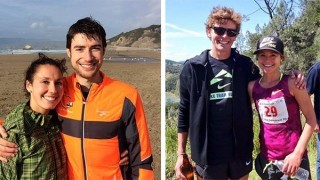
Emma and Drew Polley (left) and Tim and Lindsay Tollefson (right) will all be at the starting line at the Olympic Trials marathon (Photos courtesy of the Polleys and Tollefsons)
(c) 2016 Race Results Weekly, all rights reserved. Used with permission.
The exclusive group of 211 men and 246 women who have qualified for next month’s U.S. Olympic Trials Marathon is actually comprised of smaller, even more exclusive cliques, like “A” qualifiers (27 men and 42 women), sub-2:12 men (9), sub-2:30 women (10), and Olympians (7 men and 16 women).
But perhaps the most exclusive group are married couples. There are only four: Esther and Cole Atkins, Sara and Ryan Hall, Emma and Drew Polley, and Lindsay and Tim Tollefson. However, since Cole Atkins scratched with a foot injury and Ryan Hall retired from elite competition earlier this month, only the Polleys and the Tollefsons both plan to be on the starting line in Los Angeles on Sunday, February 13.
Recently, in a series of telephone interviews, both couples shared their paths to the Trials and hopes for race day with Race Results Weekly.
The Tollefsons
Californians Lindsay and Tim Tollefson, both 30, ran together at Chico State, graduating in 2008. They currently live in the thin air of Mammoth Lakes, Calif., the same high-altitude ski town which has long been home to Olympic Marathon bronze medalist Deena Kastor. Lindsay works as a property manager while Tim is a physical therapist; both have flexible schedules which allow enough time for training.
Before they were married in May, 2012 (Lindsay’s maiden name was Nelson), they both competed in the 2012 U.S. Olympic Marathon Trials in Houston where Lindsay finished 130th in 2:52:55, and Tim was 79th in 2:27:00. Tim readily admitted that he had a less-than-stellar day. The race was this third marathon in three months, both shoes came untied, and he really felt like dropping out. He also had a messy infection in his foot the month before the race which seriously hampered his training.
“Although my official time in Houston was a far cry from what I am capable of accomplishing, I am 100 percent proud of it,” Tim wrote on his blog at the time. He continued: “I had a staph infection in my foot, which forced me to take off significant time from training. My focus changed from the Trials to keeping my foot (healthy) as it ballooned to nearly twice its size in 24 hours.”
After those Trials, the newly-wed Tollefsons made a plan to qualify again for 2016. They targeted the 2013 California International Marathon in Sacramento with its gently downhill course and typically cool, December weather. For Lindsay, it was a great day. She finished 11th, ran a personal best 2:41:31, and easily made the then-prevailing “B” qualifying standard of 2:43:00. But Tim wasn’t so lucky. He ran 2:18:29, 29 seconds over the men’s then-prevailing “B” standard of 2:18:00.
“We went into 2013 hoping that we were both going to knock out our qualifiers that day,” Tim explained. “It turned out that I was 29 seconds slow.” He added: “I guess I was distraught, as I came down the final 100 meters and I could see the clock tick by. But, I was excited because she (Lindsay) was on pace for a personal best and a qualifier.”
With the Trials more than two years off, Tim wasn’t worried about qualifying again, and Lindsay shared that view.
“It wasn’t too big of a deal, because we know there were more opportunities to hit it again,” Lindsay recalled. “We know we could try again in a couple of months.”
But Tim never hit the 2:18:00 standard. He ran 2:19:43 at Grandma’s Marathon in Duluth in June, 2014, a race he had really dedicated himself to in his training. He was crushed.
“I spent the entire spring training for Grandma’s Marathon,” he lamented. “I ran 2:19 at Grandmas Marathon and I was really frustrated.”
Tim decided that he needed a break from marathons, and began to explore his passion for mountain and trail running. He entered the USA 50K Trail Championships in Bend, Ore., in September, 2014. He not only won the race, bagging his first national title, but he set a course record.
“I’m going to put marathoning on the back burner,” he recalled telling himself. “It was really nice in the sense of (giving up) such structured and pace-oriented practice, and just go out and reignite the passion.”
Tollefson stuck with trail and ultrarunning in 2015 (he’s sponsored by Nike in their trail running program), and the 2:18 marathon never came. He began to accept that there would be no Olympic Marathon Trials for him in 2016 and he was fine with that. Instead, he arranged to run in a 125K ultramarathon in the Canary Islands three weeks later, part of the Ultra-Trail World Tour.
“It’s a very competitive field,” Tim said of the race in Spain. “One hundred twenty-five kilometers, up and over the main island, Gran Canaria. It traverses the volcano with about 6,000 feet of climbing. It’s basically the exact opposite of the LA Trials.”
But last December Tim got an unexpected gift. USA Track & Field had to soften the men’s Trials entry standard to 2:19:00 to be in compliance with the IAAF’s revised Olympic Game standards (the women’s standard was also softened to 2:45:00). Suddenly, Tollefson was a qualifier, which he called “an early Christmas present.”
“I remember Lindsay and I were running along Green Church Road in Mammoth,” Tim said. “A friend texted me ‘congrats.’ Congrats for what? I haven’t done anything.”
But due to his lack of dedicated marathon training, and Lindsay’s battle with a mysterious nerve problem which sometimes sends pain down both of her legs, the Tollefsons have tempered their expectations for the Trials. The race has become more about the honor of taking part in the once-every-four-year ritual by which the United States selects its Olympic Marathon team. The USA remains the only country with a binding, one-day, cutthroat trial.
“At this point I’d be happy to finish without having pain,” said Lindsay. “I don’t want to be running 6:30 (per mile) pace and finish. If I’m running low-mid 6’s, that would be great. That’s sort of the reality of where I’m at, and it sucks.”
Tim adds: “It’s a very special event. We get the question a lot from people, once we explain to them that we have no shot of making the top three. Non-runners don’t understand it. For a lot of us, making the Trials is our Olympics.”
The Polleys
Drew, 30, and Emma, 25, live in Seattle and are still newlyweds (they were married in November). Drew works as an environmental consultant (he’s an environmental engineer), while Emma works 25 hours a week as a barista.
“I’m not very good just having running on my plate for the day,” said Emma.
Drew is a seasoned marathoner, and qualified under the previous 2:18:00 standard at the same race as Lindsay Tollefson, the 2013 California International Marathon. In fact, he finished eighth in 2:17:23, three places ahead of Tim Tollefson. A year later at the same race, he ran 2:18:50, a mark which became a second qualifier after USATF loosened the standard to 2:19:00 last December. He doesn’t have a coach.
“I’ve been self-coached for last couple of years,” said Drew. “I’ve considered getting a coach, but with my work schedule it’s hard. For the time being I’m self-coached.”
Drew, who competed for Washington State during his NCAA career, ran the 2012 Trials and had a successful day. He finished 21st in 2:14:58, still his personal best. He’s turned optimistic about next month’s Trials, but only recently.
“I’ve been pleasantly surprised in the last couple of months,” Drew said. “I’ve been able to run really high mileage; I don’t think I’m quite in the shape I was in the last Trials, but think I’m in 2:16 shape right now.” He added: “I’m really happy with where I am.”
But for Emma, the marathon is still new territory. The 2012 Mid-American Conference 5000m champion (both indoors and out) for the University of Toledo, she’s only covered the distance once, at the California International Marathon in 2014 where she finished 22nd in 2:42:11. Call her a reluctant marathoner.
“I wasn’t really sure at that point if I wanted to run a marathon, ever,” Emma recalled before starting her first marathon build-up with Drew coaching her. “I was really intimidated by the distance at that point.” She continued: “After seeing Drew get his qualifier, seeing him go through the training, I thought maybe I can do that.”
But having her husband coach her brought new strains to their relationship, something they can laugh about now.
“It was good for the most part,” said Emma, who is now coached by Mike Morgan. “We had a few disagreements just because I like to do track workouts a lot, and there isn’t a whole lot of place for track workouts in a marathon build-up.” She added: “There was a lot of whining on my side.”
“I can’t lie,” said Drew playfully. “It definitely put some pressure on there. That’s why I knew I had to get out of coaching (Emma). It’s hard when your fiance tells you she doesn’t want to do something.”
But under Coach Morgan, a 2:14:22 marathoner who was coached by Kevin and Keith Hanson of the Hanson Brooks Original Distance Project, Emma has embraced marathon training and is optimistic about the Trials.
“I’ve had a little more than a year under my belt and felt like I could have a little more of a bigger goal,” she said. “So, I’ve worked out 6:02 as a goal pace, about 2:38. That would be a great day for me. That would be a great progression.”
Drew may not be Emma’s coach anymore, but he’s the voice of experience. His best advice to avoid mistakes? Stick to your plan.
“The biggest one without question is getting caught up and going out too fast, due to too much adrenaline or just following the heard,” Drew intoned. “Time after time my best races came when I went out on my goal pace and finished strong in the end. You can lose a lot of time at the end. Emma is probably tired of me saying that.”
Both Drew and Emma are part of the Brooks Inspire Daily program, and will wear Brooks gear in the race.
“It’s been really great to be part of the Brooks family,” said Emma. “Being in Seattle it’s been very cool. They’re a really good brand to work with.”
The post Olympic Trials Marathon Field Will Include Two Married Couples appeared first on Competitor.com.
How to Race Your Full Season and Not Burn Out

Photo: Shutterstock.com
With the surge in race participants and the abundant social media surrounding the sport, it’s not uncommon for runners to race every week, some even more than once a week. It’s almost gotten to the point where social media can pressure runners into feeling like they need to race more just to call themselves a runner.
There is nothing wrong with racing; it’s one of the best feelings to experience. But, with the influx of new runners, many neglect how to safely and most effectively plan racing into their training routine.
It’s important to stress that there’s a difference between quality versus quantity, and not every race is created equal. For each season, select only a few key races to focus on, making those the ones to shoot for a PR or high finishing place. More importantly, to prevent burning out this racing season don’t approach every single race with an “all out” mentality.
Avoid mental and physical burnouts
A body only has so much to give and that applies both physically and mentally. Think of your body like a well with a given amount of water. Every time you race you scoop out a bit of that water. You want to ensure that by the end of your season you still have a hefty amount of water to take out for the races that matter the most.
Recovery and proper training deposits some water back into that well, but once you reach the bottom, it’s nearly impossible to refill the well quickly without taking a break. As any runner who has reached the stony bottom of that well can tell you, it’s far easier taking water out than trying to put any back.
Sometimes it’s the mental well more than the physical that becomes depleted due to over-racing and too many hard workouts. They say running is one of the most mentally demanding sports for a reason.
That’s why breaks after long seasons are just as much about restoring your body as your mind. By the time you come off a break and get back to training and racing, you should feel excited to lace up, and actually crave a good run. By contrast, runners who start to dread their runs, viewing races as burdens, they are the ones who are trying to remove water from an empty well. Eventually these runners will rob themselves of the love of running.
RELATED: To Avoid Training Burnout, Have Fun
Use smaller races as workouts
‘Racing through’ a race applies both in your physical training and how you mentally approach a race. With racing through a race, the goal is to stay more relaxed, don’t allow too much of that nervous energy or race day adrenaline take over. To bring it back to our well analogy, this process is like taking small sips of water for the early races so there will be enough left to take bigger gulps for the goal races in your season.
“I don’t have any training partners to do workouts with and I’m not a fan of really long workouts, so that’s part of the reason I run so many races,” says Lauren Smith, who will be lining up for the 2016 U.S. Olympic Trials Marathon on Feb. 13 in Los Angeles.
Not everyone has the benefit of training partners, so jumping into a low-key race as a workout or long run is a viable training strategy. Remember though: Keep it strictly as a workout. Recognize that there is absolutely nothing wrong with racing as much as you like, but it is crucial that you maintain a marked difference between the exertion level of a race where you are shooting for a PR, versus a small, local fun run.
“Most of the [smaller] races build up for my bigger ones that have more competition, so naturally with more competition I race harder,” Smith explains of her strategy. “In all the other ones I’m still putting in effort, I just have more adrenaline and have that extra go.”
Planning everything right, you’ll reach the bottom of that well as you cross the finish line of that last race, celebrate a great season of racing, take a break to recharge, then enter the next season with a replenished well, eager to tackle bigger challenges.
The post How to Race Your Full Season and Not Burn Out appeared first on Competitor.com.
Workout of the Week: David Laney’s 5-4-3 Progression Run
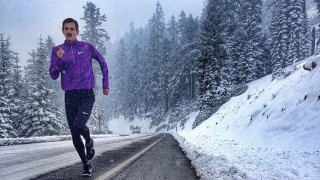
Laney says this workout should be challenging, but controlled. Photo: Courtesy of David Laney
David Laney found his stride on the trails in 2015, kicking off the year by winning a national title at the Bandera 100K in January, and following that up with a victory at the Chuckanut 50K in March, improving upon his second-place finish from 2014. Those impressive victories aside, the Nike Trail-sponsored Laney may have shined brightest over the summer, battling to an eighth-place finish at the Western States 100 in June (a 12-place improvement from the year before) and a podium finish at the grueling 104-mile Ultra-Trail du Mont Blanc (UTMB) in August, where he placed third.
Next up for Laney: the 2016 U.S. Olympic Trials Marathon on Feb. 13 in Los Angeles. Laney qualified for the Trials with a 2:17:02 personal best clocking at Cal International in late 2014, evidence of his impressive road-to-trail versatility.
One of Laney’s key workouts for developing the fitness necessary to run a solid marathon while also being able to compete at the front of long trail races is a 5-4-3 mile progression run, which he typically does once or twice during a marathon or 50-mile buildup. The last one usually falls 5 or 6 weeks out from his goal race.
“For me, it’s a challenging but fairly controlled workout,” explains Laney, who also coaches runners at Trails and Tarmac. “The workout gives you a ton of volume around marathon pace and a ton of work at your aerobic threshold without the effort of hammering a half marathon at race pace.”
Following a 3-mile warmup at an easy pace, the workout starts with 5 miles at 10 seconds per mile slower than your marathon race pace. After completing the 5 miles, “recover” with a cruise mile that’s roughly 45 seconds per mile slower than your marathon race pace. Upon the completion of your cruise mile, run 4 miles at your marathon race pace—which for Laney equates to 5:15 per mile—followed by another cruise mile. The workout finishes with 3 miles at 10 seconds per mile faster than your marathon race pace. Cool down with 3 miles of easy running.
“The cruise miles break up the workout quite a bit and make it much easier,” says Laney. “I know I’m really fit not when I go faster on the marathon pace sections but on the cruise miles. When those feel really easy and I recover quickly I know I’m ready to go.”
Laney says the workout—which should be done on a flat or gently rolling road or bike path—can easily be modified by doing a 4-3-2 or even a 3-2-1 mile progression in place of the 5-4-3 format.
“This is a great workout because the paces and distances can be easily modified to runners of all abilities,” explains Laney. “For newer runners simply doing 3-2-1 mile progression or 4-3-2 is a great workout.”
The post Workout of the Week: David Laney’s 5-4-3 Progression Run appeared first on Competitor.com.
5 Reasons to Incorporate Unilateral Strength Training
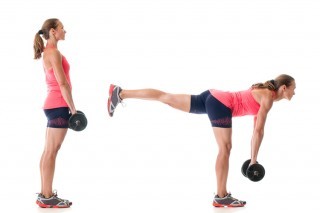
We don’t run with both legs at the same time, so why do we train both legs together in the gym? Good question, right? The answer is, maybe you shouldn’t be.
While bilateral training (think the traditional squat) is by no means a bad thing, unilateral training (single-leg squat, lunge, step-up, etc.) may be a better choice for runners.
Unilateral exercises are an integral part of rehabilitation programs—they offer one of the most effective ways to retrain muscle groups and get your body working the way it was meant to. The thing is you don’t have to be broken to take advantage of this type of training. Aside from its ability to guard against injury and improve your overall running performance, there are five more reasons you should definitely consider incorporating unilateral training into your workout routine.
Reduce Muscle Imbalances
Everyone has a dominant and non-dominant side; generally the limbs on your dominant side are stronger than those on the non-dominant side. When you’re performing a traditional bilateral squat, in most cases, your dominant leg will compensate to some degree for any weakness in your non-dominant leg. By training one leg at a time, you’re forcing your non-dominant leg to step up and work just as hard as your dominant leg. Over time, unilateral training will resolve any muscle imbalances you may have.
Improve Muscle Recruitment
Bilateral training provides a pretty cushy exercise environment; unilateral training, on the other hand makes you work harder and recruit more muscle fibers to perform the exact same movement. Take squats for example. When done with both legs your body is in a balanced, comfortable position. Remove one leg out of the equation and now your abductors and core have to work to stabilize your pelvis while your working leg executes the squat. One limb movements also necessitate greater recruitment of the stabilizer muscles that surround the working joint.
RELATED: Single-Leg Drills for Balanced Running
Build Functional Strength
Yes, traditional bilateral training will make you stronger and make you a better runner, but how often do you really have the opportunity to use both legs equally to do something? Take running on uneven terrain, for example; each leg has to have the physical capacity to withstand uneven loads coming from any direction like when you jump over a fallen log or have to take an extra big stride to miss a puddle.
Greater Workout Intensity
Some runners find strength-training tedious because it can lack the vigor of cardio. Well, unilateral training allows you to crank the volume on your workout intensity because you don’t have to rest between sets. Since you’re working one leg at a time you can move from one leg to the next, allowing each leg some recovery time without giving your heart and lungs any time off. The constant movement will push your intensity through the roof, making it an awesome addition to your cross-training arsenal.
Incorporated Core Training
When you train one leg at a time, you automatically throw your body off balance. Unilateral exercises provide a disruptive torque to the body, forcing your core muscles to engage in order to neutralize the force and keep your body upright. The uneven weight distribution instantly recruits your deep stabilizer muscles and has them working throughout the duration of the exercise, giving you a solid core workout without any added effort on your part.
RELATED: Strength Training for Runners: Single-Leg Deadlifts
The post 5 Reasons to Incorporate Unilateral Strength Training appeared first on Competitor.com.
Shoe Of The Week: Nike Lunar Tempo 2
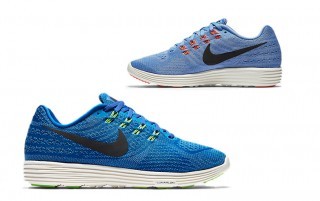
Believe it or not, the Lunar Tempo 2 has been updated and is $10 cheaper than the previous version.
Much like the first version, this flyweight trainer offers an amazing mix of lightweight performance and resilient cushioning. The full-length Lunarlon foam midsole/outsole chassis offers enough softness and protection for marathon-length runs in a svelte package that’s sufficiently agile and responsive for interval workouts and short races. The engineered mesh upper has been tweaked slightly, offering a more structure/support (in conjunction with the arch-wrapping perforated internal bootie and Flywire support system), while still offering optimal forefoot flex and comfort. Oh, and believe it or not, this shoe actually dropped $10 in price!
While more stable than the previous version, this shoe is for strong-legged neutral runners only. The improvements have removed the hint of sloshiness that some of our wear-testers felt in the first version of the shoe, but it’s still essentially a racing flat with a super-cushy under carriage. It’s an amazing performance shoe, but not recommend for anyone who severely overpronates or has an unstable gait. (Yes, the men’s version comes in pink, while the women’s version is offered in dark blue.)
Price: $100
Weights: 7.5 oz. (men’s 9); 5.9 oz. (women’s 7)
Heel-toe offsets: 8mm; 26mm (heel), 18mm (forefoot)
Info: Nike.com
RELATED: Shoe Of The Week—HOKA Vanquish 2
The post Shoe Of The Week: Nike Lunar Tempo 2 appeared first on Competitor.com.
Gear We Love: January 2016
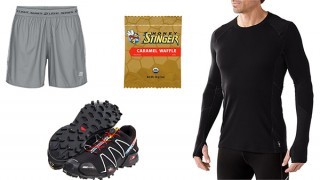
What gear are Competitor editors fans of as we start 2016? Here’s a look:
Photo Gallery
1 of {count}
Back to Start
View Larger Image
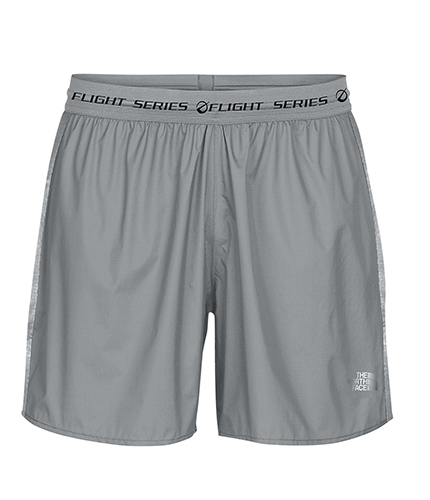
The North Face Men’s Ultra Lite Waterproof Running Shorts
"It’s been a wet winter where I live in the Bay Area, but thankfully it hasn’t been all that cold. These waterproof shorts from The North Face have come in handy on a few rainy runs of late. They repel water really well and ventilation in the back allows your legs to breathe. The only downside is there is no built-in liner, so I suggest procuring a pair of moisture-wicking athletic underwear to wear underneath."—Mario Fraioli, senior editor ($65, thenorthface.com)
View Larger Image

Salomon Spikecross 3
"If you're a runner who lives somewhere north of, well, Texas, Arizona or Florida, you've probably run in some snow, ice and slush in recent weeks. I live in Boulder, Colo., and I've been running in all sorts of that stuff. I don't mind the cold weather at all, but I don't like slippery footing, no matter if I'm out for an easy jog, a long run or a fast workout. On the worst days (when I haven't been testing 2016 shoes), I've gone to my old standby snow-running shoes, Salomon's Spikecross 3s, for their extremely reliable traction—both from a knobby rubber outsole and the array of nine carbide spikes embedded in the rubber. The spikes are prickly enough to offer stable footing on ice, packed snow and any combination you'll find on the roads and trails, not to mention slippery rocks and wooden trail steps. Several other brands make shoes with built-in spikes, including the new Merrell All-Out Terra Ice Waterproof ($180, merrell.com) and Ice Bug's Aurora BUGrip ($180, icebug.com). If you want more coverage, Salomon also makes a high-top shoe called the Snowcross ($200) but it doesn't have built-in spikes."
—Brian Metzler, editor-in-chief ($170, salomon.com)
Competitor.com.
January 26, 2016
What Motivates Some Runners To Cheat?
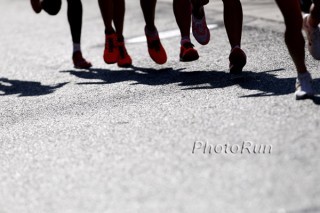
Photo: PhotoRun.net
Stories of runners using performance-enhancing drugs and taking part in other types of cheating—think mat skipping at major marathons—continue to dominate road racing headlines. While the motivation for money and fame at the professional level is fairly obvious, less understandable is the drive to win at all costs that takes place further down the rung. Just what compels an age-grouper or an elite amateur to risk their health and/or reputation to place well in a race?
Adrienne Langelier, sports psychology consultant and a talented runner herself, has some theories. “At the professional level, it’s an extrinsic motivation,” she says. “There’s money, rewards, and the belief in some cases that everyone is doing it and you have to level the playing field.”
For lower-level competitors, the motivation tends to be intrinsic, she says. “These are generally highly competitive individuals and they want an edge,” Langelier explains. “Or perhaps it’s a masters athlete who wants to fight the effects of aging.”
There are also runners who simply want to overcome their genetic or training time limitations. “They might need to talk themselves into it, but they probably consider what they’re doing as not harmful to others,” she says. “That’s where it’s more of an ethical issue.”
A 2010 German study by Schwieren, et al, suggested that competitive pressures are only part of what makes up the motivation to cheat. “Here they found that some of it is just image, or the motivation to save face,” says Langelier. “These are people who don’t want to be viewed as failures or compromised. They are completely wrapped up in their competitive identity.”
There is also an element of thrill seeking involved. “There’s definitely a high that comes from getting away with cheating that appeals to some athletes, particularly males,” Langelier maintains.
Once they get started, it’s sometimes tough to quit, too. This was the case for journeyman road racer Christian Hesch, who in 2012 admitted to using EPO since 2010, ultimately resulting in a two-year suspension from USADA. He said he first used EPO to recover from an injury. “I assumed I’d never do it again,” says Hesch, who has not returned to competition. “But my desire to travel and race outweighed my ethical fortitude to do things the right way.”
RELATED: Man Arrested After Cheating at Nairobi Marathon
Going After Cheaters
As numbers continue to explode at road races around the country, race directors must become increasingly diligent about preventing and punishing runners who cheat.
Most major marathons now have measures in place on the course that makes cutting corners difficult. “The foundation of our program is our timing system,” says Chicago Marathon race director Carey Pinkowski. “We have mats at every 5K plus several at undisclosed locations. We can immediately flag runners who miss those mats and disqualify them.”
More elusive, however, is catching those who use banned substances, especially at the amateur level. “We pre-race test about 30 or 40 top athletes, in addition to testing our top 10 finishers on race day,” says Pinkowski.
The fact remains that drug testing is costly, generally prohibitively so for smaller races, so most race directors cannot afford to trickle it down to sub-elites. “Given our limited resources, the majority of our out-of-competition testing is focused on the elite athletes listed in our registered testing pool,” says U.S. Anti-Doping Agency spokesperson Ryan Manning. “But we can and do test age-level athletes out of competition where appropriate.”
Blake Boldon, executive director of the Indianapolis Monumental Marathon, instituted a policy that bans any racing groups from toeing the line if a member has tested positive prior to his race. “The cost to test really cuts into our budget,” he says, “so we had to get more creative.”
While all the measures help, for some runners, the temptation to beat the system will always remain. “Succeeding through cheating helps feed the ego and fulfills some need that was never met for some people,” says Langelier. “I believe these athletes go through a cost-benefit analysis of cheating by rationalization. They believe the consequences, both organizational and to their own health, is lower than the performance benefit.”
The post What Motivates Some Runners To Cheat? appeared first on Competitor.com.
Matt Llano Building Momentum Toward An Olympic Berth
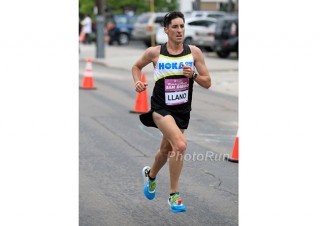
Matt Llano has made huge strides as marathoner in the past two years, lowering his PR to 2:12:28 in 2015. Photo: PhotoRun.et
On paper, 27-year-old Matt Llano is another razor-fit, elite American marathoner with excellent credentials who is on a Zen-like mission to snag one of the coveted top three qualifying spots for the U.S. Olympic team at the Olympic Trials Marathon on Feb. 13 in Los Angeles.
“As a person, as a runner, Matt is quite special,” says his high school coach Dana Hobbs of Broadneck High School in Annapolis, Md. “He is hard work and dedication personified. He is compassionate and empathetic. He’s fierce in competition and kind and soft spoken as a human being. Matt is almost an enigma. His personality traits consist of so many opposites that when put together, they complement each other quite well.”
Like many other hardworking entrants, Llano has been pushing the envelope in training with a steady diet of 120-130-mile weeks. His current coach, Ben Rosario, expresses confidence in his even-keeled protégé. “He’s been looking very good,” says Rosario, who coaches Llano along with the rest of the Flagstaff-based HOKA Northern Arizona Elite team. “I think he’s ready to compete to run a 2:09 if needed to make the team, and we’re going to be ready to go on that day.”
Rosario, a well-regarded elite running coach, ventures high praise only when warranted. He’s known Llano since they founded NAZ Elite together in 2012. HOKA came on board at the beginning of 2015.
“Matt has always led our group by example and sets the standard for the others,” Rosario says. “He goes to bed early, he eats a clean diet, he trains as hard as anyone, and he does everything right.”
“I love Matt’s unrelenting belief in himself,” adds teammate Kellyn Taylor, a 2:28 marathoner who will also compete at the Trials in L.A. “He is one of the hardest workers I’ve ever encountered in any profession. Honestly I feel badly about my work ethic when comparing it to his. He does everything right and I feel certain that it is going to pay off for him.”
In spite of the external optimism, there are approximately 10 higher profile athletes subjectively ranked ahead of Llano at the Trials, and they too have the coaching, training, support, and race times to make the team. But the biggest key for Llano seems to be his newfound peace of mind.
“It was such a huge relief,” Llano says of coming out as a gay athlete on his blog in late 2013, parting ways with substantial inner turmoil. “Prior to that, I’d gone through a year or two in college and just after that time when I was struggling in my personal life with this and it spilled over into my running career. One day it occurred to me that not being able to talk openly about it was holding me back. When I came out it relieved a lot of pressure off my shoulders and things took a huge turn for the best, both in my running and personal life. Being able to be open and be myself has had such a positive effect on my life.”
When Llano came out, he found the nearly unilateral acceptance heartening, which instantly supercharged his spirits and quickly showed up in his training and racing. He was happier, slept better at night and he woke up more excited by each new day.
“It was scary for me,” Llano admits. “You never really know what people are going to think.”
The charismatic Llano was already well-liked and had many friends. But after coming out, nothing else could nag at the back of his mind and sap his mojo. For the next two years, he would focus solely on running.
“I tend to do very well with tunnel vision,” Llano explains. “This really cemented my ability to focus on being the very best I can be at the Olympic Trials.”
His family and friends rallied in unbridled support.
“When he came out as gay in his blog in December of 2013, it was one of the hardest things he’s ever done,” says his mother Sue Llano. “He was overwhelmed and humbled by the support that he received. His hope is that his coming out might help just one other person going through the struggle that he went through growing up.”
The shift was not lost on his coach.
“It was really cathartic for Matt,” adds Rosario. “That’s when he had his huge breakthrough and ran 1:01:47 at the Houston Half Marathon in 2014. You never really know how people are going to react, but when he came out he realized that he was really supported by a lot of people. More than that, he realized he was loved. I think that was the key missing piece of the puzzle for him.”
Still, even if the mind and heart are in tandem, there remains the immutable task of being an unheralded, 2:12 marathoner hoping to knock a few more minutes off of his personal best while taking down some more accomplished runners en route to making the U.S. Olympic team.
Llano was athletic as a youth, tinkering with soccer and swimming. His initial interest in running was sparked when he won a couple of indoor track meets in his junior year in high school. At that point he made the transition from soccer and focused solely on running. One of his high school teammates was Matthew Centrowitz Jr., who has gone on to become one of the best 1,500m runners in the world.
“I’ve had the opportunity to coach some great runners in my years as a coach,” recalls Dobbs. “When Matt (Llano) was a senior, Matt Centrowitz was a junior. I had the best 1-2 punch in the state of Maryland. Watching the two of them train together was awesome. They learned from each other. Seeing what both of them have become is no surprise to me. (Centrowitz) was always headed in that direction. In due time, Matt (Llano) found his way. He learned that longer distances are where his strengths lie.”
Llano competed collegiately at the University of Richmond in Virginia, where he ran 28:53 for 10,000 meters. He also took summer trip to Flagstaff and vowed to one day return.
“I remember really liking it up there, and it had always nagged the back of my mind,” Llano says. “The altitude felt good. I was determined to go back there to train at some point.”
When Llano arrived in Flagstaff for good in 2012, he paired up with Rosario and helped found NAZ Elite. The group now has the full backing of HOKA, which has allowed Llano and his teammates to train as a full-time, professional athletes. Llano recently logged a 143-mile week and fully embraces the monastic lifestyle of an elite athlete.
“I was able to quit my part-time job and focus just on training,” Llano says. “It’s been wonderful to see everything get to this level. Early on HOKA used to sponsor a few middle-distance runners, but they came on really big last year and signed our whole group at the beginning of 2015. They made it really obvious to us that they were fully committed to the sport and to the early development of athletes, and they’ve been such a huge help for all of us.”
Llano is excited for this final phase of pre-Trials training, which will include a 2-week training stint in San Diego, where his team can acclimate to running at sea level.
“Most of the time, when I go away to train I have to do it by myself,” Llano says. “Before Berlin last September (where Llano notched his 2:12:28 PR), I went to Portland and trained there for a stretch but I didn’t have my team with me. We’ll have pretty much the whole team here this time. We are like a family. It will be a lot more fun and I think it will keep everyone loose but focused.”
For Llano and his teammates, years of hard work and sacrifice will come down to one day—the U.S. Olympic Trials Marathon on Feb. 13. Whether he makes the team or not, Llano is just starting to build momentum as a marathoner—the sky is the limit, says his agent, Josh Cox, a four-time U.S Olympic Trials Marathon participant in his own right.
“Not just in running but in whatever he wants to do many, many years down the road when his racing career is over,” says Cox. “I’m really fortunate to work with him.”
The post Matt Llano Building Momentum Toward An Olympic Berth appeared first on Competitor.com.
Super Cushy Rides: 15 Max Cushioned Running Shoes
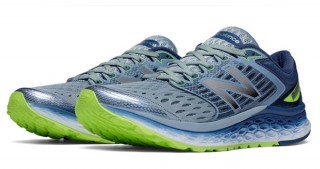
Here’s a look at some of the most cushioned shoes you’ll see in 2016.
Although shoes with copious amounts of cushioning have been around for a while, maximally cushioned running shoes have exploded in popularity over the past two years. The category was pioneered by Hoka One One in 2010, but that’s certainly not the only brand producing shoes with thick, cushy midsoles in 2016. Are they all “maximalist” models? Maybe, maybe not. Most brands don’t use the “maximalist” moniker, but then again there isn’t a universal midsole thickness or stack height dimension that defines maximal cushioning. Here are 15 highly cushioned models you’ll see at running stores this spring and summer.
RELATED: 12 Things You Should Know About Maximalism
Photo Gallery
1 of {count}
Back to Start
View Larger Image

Hoka One One Vanquish 2, $170
Hoka completely overhauled this cushy neutral shoe for 2016, making it lighter and more energetic. Weights: 9.8 oz. (men’s 9.0); 8.3 oz. (women’s 7.0)
Heel-Toe Offset: 5mm; 32mm (heel), 27mm (forefoot)
View Larger Image

New Balance Fresh Foam 1080, $150
Continuing on the heels of its successful Fresh Foam line, the new Fresh Foam 1080 is a premium neutral cushioned shoe with near-maximal cushioning, a plush interior, securely-fitting interior booty and a soft engineered mesh upper. ($150, 8mm heel-toe offset, 10.4 oz.)
View Larger Image

Nike Free RN Distance, $120
Like its Free predecessors, the Free RN Distance a very lightweight shoe with a snug, sock-like fit, amazing flexibility and smooth ride. What's new about this shoe is the copious amount of well-balanced, moderately soft midsole cushioning and some added structure that comes from the Flywire arch support system. Weights: 7.8 oz. (men’s size 9); 6.6 oz. (women’s size 7); Heel-Toe Offset: 4mm; 20mm (heel), 16mm (forefoot)
View Larger Image

Saucony Triumph ISO 2, $150
Saucony is debuting a new Everun cushioning system in 2016—a lively new foam material that it says provides considerably more energy return than its previous foam packages and maintains its resiliency three times longer than standard EVA foams. The new material will be inserted over the strobel board (underneath the sockliner) to enhance the ride in almost every one of Saucony's shoes in 2016 and it will also been inserted in the landing zone of the neutral Triumph ISO 2 ($150, 8mm heel-toe offset, 10.2 oz.) and the stability-oriented Hurricane ISO 2 ($160, 8mm heel-toe offset, 10.8 oz.).
View Larger Image

Saucony Kinvara 7, $110
Saucony isn't doing too much to this popular lightweight neutral trainer, but it is giving it a nice wedge of its new Everun foam in the heel and adding some additional bits of durable rubber on the outsole. ($110, 4mm heel-toe offset, 7.8 oz.)
View Larger Image

Under Armour Fat Tire, $150
The Fat Tire trail running shoe is designed to mimic a mountain bike tire rolling over terrain. It has a water-resistant upper, it features two layers of soft foam and a new Michelin rubber compound, plus a slightly rockered profile from heel to toe as well as side-to-side. (Due out in July 2015.) weights: 13.0 oz. (men's), 10.8 oz. (women's)
heel-toe offset: 10mm; 27mm (heel), 17mm (forefoot)
View Larger Image
[image error]
Altra Paradigm 1.5, $130
One of the lightest maximalist shoes on the market, the updated Paradigm is relatively quite stable (and not at all clunky) for all that material under foot. As with all Altra shoes, it has a zero-drop (or flat) platform and a wide, "foot-shaped" toe box. (Due out in May 2015.)
weights: 9.8 oz. (men's), 8.0 oz. (women's);
heel-toe offset: 0mm; 34mm (heel), 34m (forefoot)
View Larger Image

Hoka Bondi 4, $150
With one of the thickest midsoles in the marketplace, the Bondi is in an extreme class of high-off-the-ground, oversized cushioning shoes. But it’s not just the amount of cushioning, it’s the balance of the shoe and its unique design features—specifically the rockered profile, beveled heel and significant toe spring—that make running in the Bondi 4 such an exalted experience.
weights: 10.6 oz. (men’s), 9.4 oz. (women’s);
heel-toe offset: 4mm; 37mm (heel), 33mm (forefoot) for men; 34mm (heel), 30mm (forefoot) for women
View Larger Image

Brooks Transcend 2, $170
The Transcend 2 is a super-stable guidance shoe with loads of cushioning underfoot. The second edition is functionally softer than the original (but not super soft or mushy) and has a slightly beveled heel for smoother heel-impact flow. weights: 11.1 oz. (men’s), 10.2 oz. (women’s);
heel-toe offset: 8mm; 29mm (heel), 21mm (forefoot)
View Larger Image
[image error]
Altra Olympus 1.5, $135
This high-off-the-ground trail runner features two layers of foam, one for softness and one for resiliency. It has been updated with a better tread pattern, a refined fit and more durable upper materials. As with all Altra shoes, it has a zero-drop (or flat) platform and a wide, "foot-shaped" toe box.
weights: 12.2 oz. (men’s), 10.7 oz. (women’s);
heel-toe offset: 0mm; 36mm (heel), 36mm (forefoot)
View Larger Image

Skechers GoTrail, $110
Skechers continues to evolve its trail running line. The new GoTrail has more cushioning than ever before—although still less than the GORun Ultra 3. It shares the same aggressive knobby outsole as the GORun Ultra 3, but the GoTrail also has a forefoot protection plate. (9.6 oz., 4mm heel-toe offset) (Available July 1.) Photo: Brian Metzler
View Larger Image

Salomon Sense ProPulse, $150
Salomon's most thickly cushioned shoe ever, the Sense Pro Pulse (due out in July 2015) is built for runners with a heavier foot strike who want a cushier ride. It has a hybrid outsole for use on both paved and trail surfaces.
weights: 12.0 oz. (men); 10.2 oz. (women);
heel-toe offset: 6mm; 29mm (heel), 23mm (forefoot)
View Larger Image

Pearl Izumi N3 Trail, $135
Pearl Izumi launches this ultrarunning trail shoe in the spring with a seamless upper, a forefoot rock plate and an aggressively lugged carbon rubber outsole. Although it has similarly high-off-the-ground cushioning and stack heights to its road running N3 counterpart, it has a slightly wider footprint to offer maximal stability out on the trails. (8mm heel-toe offset, 10.8 oz.)
View Larger Image

Hoka One One Clifton 3, $130
Hoka made a few small but significant tweaks to the award-winning Clifton for 2016, most notably making it a few millimeters wider in the forefoot and replacing the overlays on the upper with a sleeker, seamless TPU-reinforced mesh. ($130, 5mm heel-toe offset, 8.6 oz.)

More Galleries
The post Super Cushy Rides: 15 Max Cushioned Running Shoes appeared first on Competitor.com.
January 25, 2016
Nick Arciniaga Hoping for Bounce-Back Marathon at U.S. Olympic Trials

Photo: PhotoRun.net
Many, if not most, of America’s elite marathoners skipped a fall marathon, electing for shorter distances or to just keep the focus on training before the U.S. Olympic Trials marathon on Feb. 13 in Los Angeles.
There were a few exceptions, though, including 2:11 marathoner Nick Arciniaga. The Under Armour-sponsored runner was hoping to leave a better taste in his mouth after a 14th-place finish at last April’s Boston Marathon, where he ran 2:18:02. So he entered the New York City Marathon on Nov. 1. That performance wasn’t any better, though—he struggled in the second half and ran 2:22:07 to place 16th.
The tough 2015 is behind him now, but will the toll of the New York City Marathon be evident at the Olympic Trials? Arciniaga doesn’t think so.
“I’ve run numerous amounts of races where I’ve run them pretty close together—between 2-4 months,” Arciniaga said. “There were 15 weeks between New York and L.A. I was not too concerned about the timing of it.
“I was hoping to rebound off the Boston performance, but it didn’t work out. After New York, I shut it down for a week and then got back into training.”
And for the most part, the training has gone well. He did tweak a quadriceps muscle around the holidays and spent two weeks focused on cross-training and running on the AlterG treadmill. But once the calendar turned over to 2016, he was back to normal.
His first big test on the quad was the Star Wars Half Marathon on Jan. 17 in California. Arciniaga won the race in 1:05:49 and overall was pleased, but also said “it was hard to judge what that 1:05 really signifies” due in part to running inside Disneyland for the first half of the race, which had a slippery surface and an unusual amount of turns within the park (and was also run in the dark due to the 5:30 a.m. start).
Arciniaga, though, had a strong effort and made the running world laugh with his entertaining finish-line stunt, where he sliced the finish-line tape in half with a toy lightsaber he grabbed from his wife about 100 meters from the finish.
“That,” he said, “was fun.”
Arciniaga’s next trip to Southern California will be all business, though. Before the Star Wars Half, Arciniaga went to Los Angeles and got a first-hand look at the Trials course. The next time he’s there, he will have a big cheering section spread out along the route.
Arciniaga is from Orange County, not far from downtown Los Angeles. He recently learned that students from his alma mater, Fountain Valley High School, will show up in force to cheer him on. In addition, an alumni from Fountain Valley who now teaches at Jordan High School in Los Angeles is bringing out a huge cheering section—just for Arciniaga.
Could it be the hometown advantage that pushes Arciniaga into the top three and onto the Olympic team? Time will tell, but it definitely won’t hurt.
“I’m going to have two high schools out there cheering just for me,” Arciniaga said. “That’s going to be pretty awesome.”
RELATED: Competitor’s Coverage of the 2016 U.S. Olympic Trials
The post Nick Arciniaga Hoping for Bounce-Back Marathon at U.S. Olympic Trials appeared first on Competitor.com.
Ryan Hall's Blog
- Ryan Hall's profile
- 21 followers



